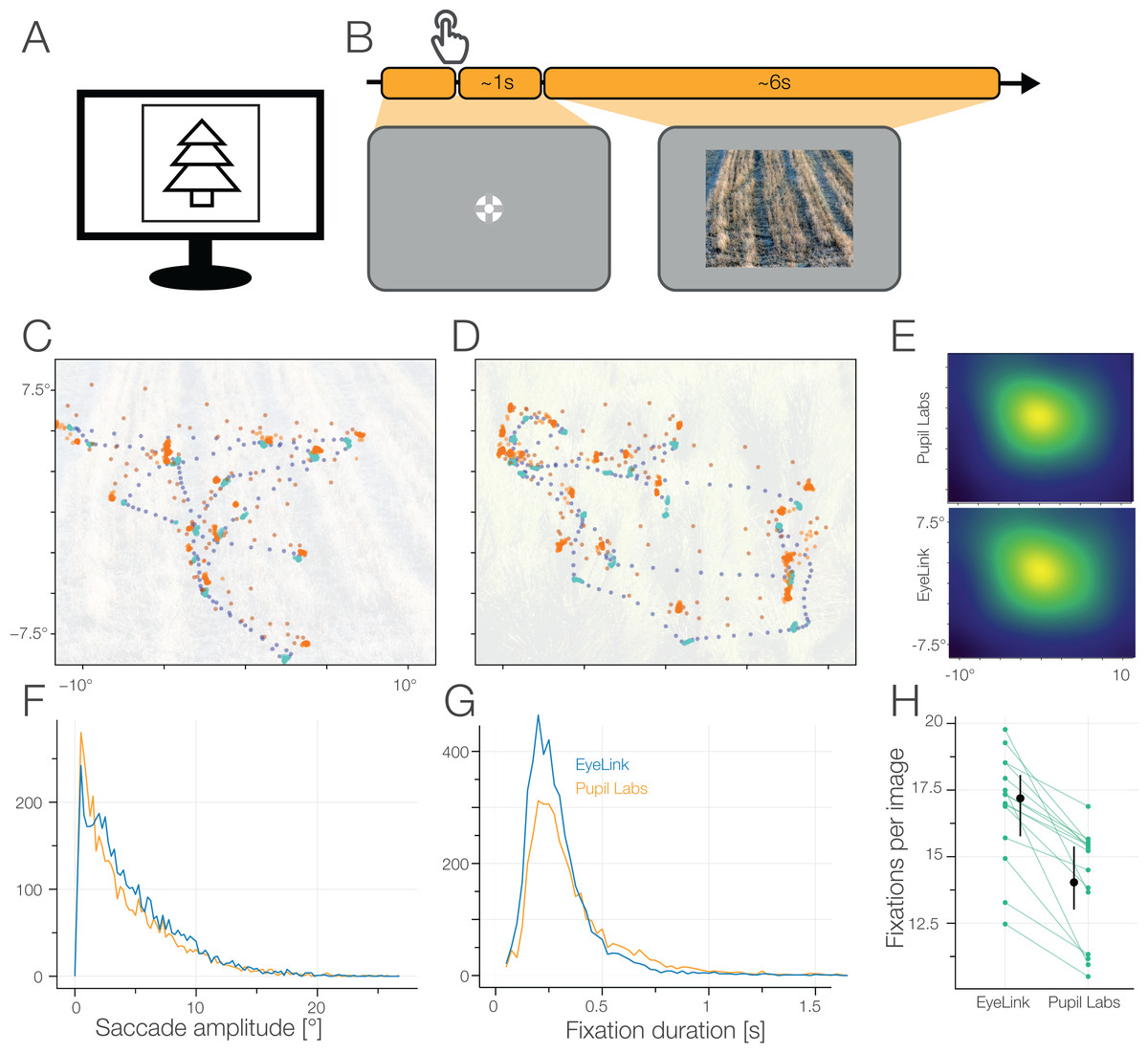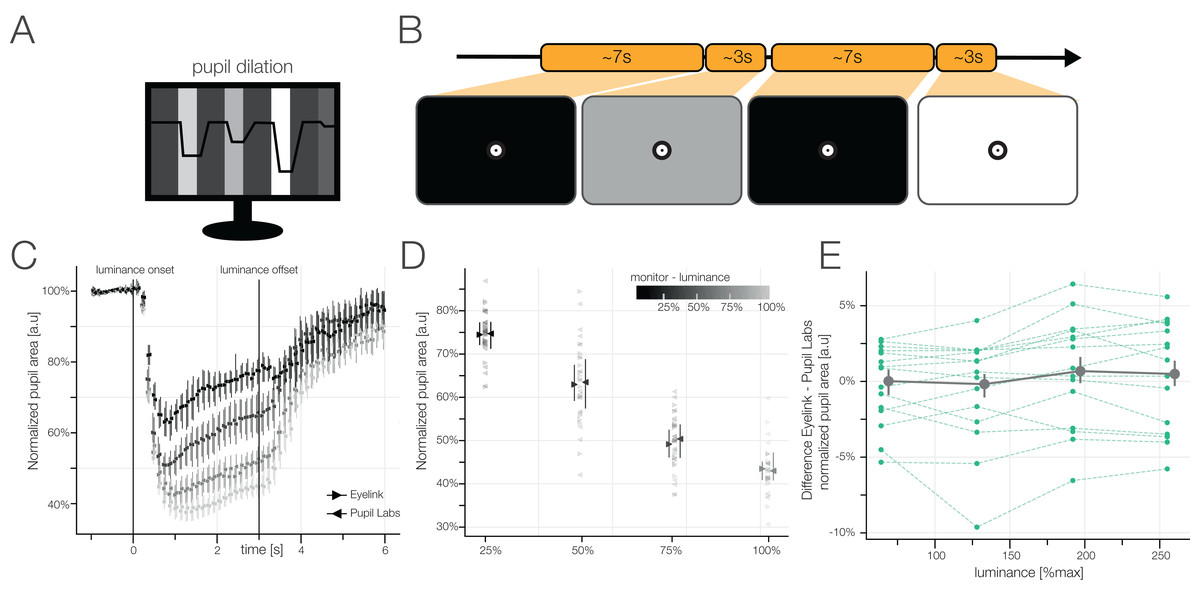New Paper: How to compare and choose eye trackers
A (short) laypersons summary

TLDR; Using our data/paper you can find out how well your eye tracker is doing in measuring your favourite eye movement
This newly published paper is open access and I share first co-author ship with the amazing Katharina Groß! In addition this project was done together with Inga Ibs and Peter König: A new comprehensive eye-tracking test battery concurrently evaluating the Pupil Labs glasses and the EyeLink 1000
We move our eyes about four times per second, which is more often than our heart beats! Many studie show that these eye movements are a window into our minds (e.g. König et al. 2017) and are commonly used for basic research, marketing research and clinical assesments.
Even though eyetrackers are so commonly used and so powerful, they are rarely tested for how well they perform besides the manufacturers. Even more critical, no test battery existed before we set out on this project. Together with Katharina Groß (and Inga Ibs and Peter König) we developed a new eye tracker test battery which included most of the typically studied eye movements.
We chose to test two popular eye trackers concurrently: The Eyelink 1000 and the Pupil Labs glasses. The former is the working horse of eye movement research (release 2005), the latter the open hardware/source innovator (release 2014).
Our study reveals some strengths and some weakenesses for both eye trackers, but also of our newly proposed test battery. The results are numerours, so I will only depict two tasks:
Free Viewing

Pupil Dilation

Take home
- Eye tracking scientists need information about the reliability and performance of their equipment to make informed decisions
- Every eye movement has their own parameters to check for, e.g. pupil dilation has different requirements to an eye tracker than microsaccade research
- Eyelink did not reach the promised accuracy (we really tried, see comments in this link)
That concludes this short laypersons summary. If you have any question feel free to comment here, write me, Katharina Groß, or any of my other co-authors. (paper doi: https://doi.org/10.7717/peerj.7086 )